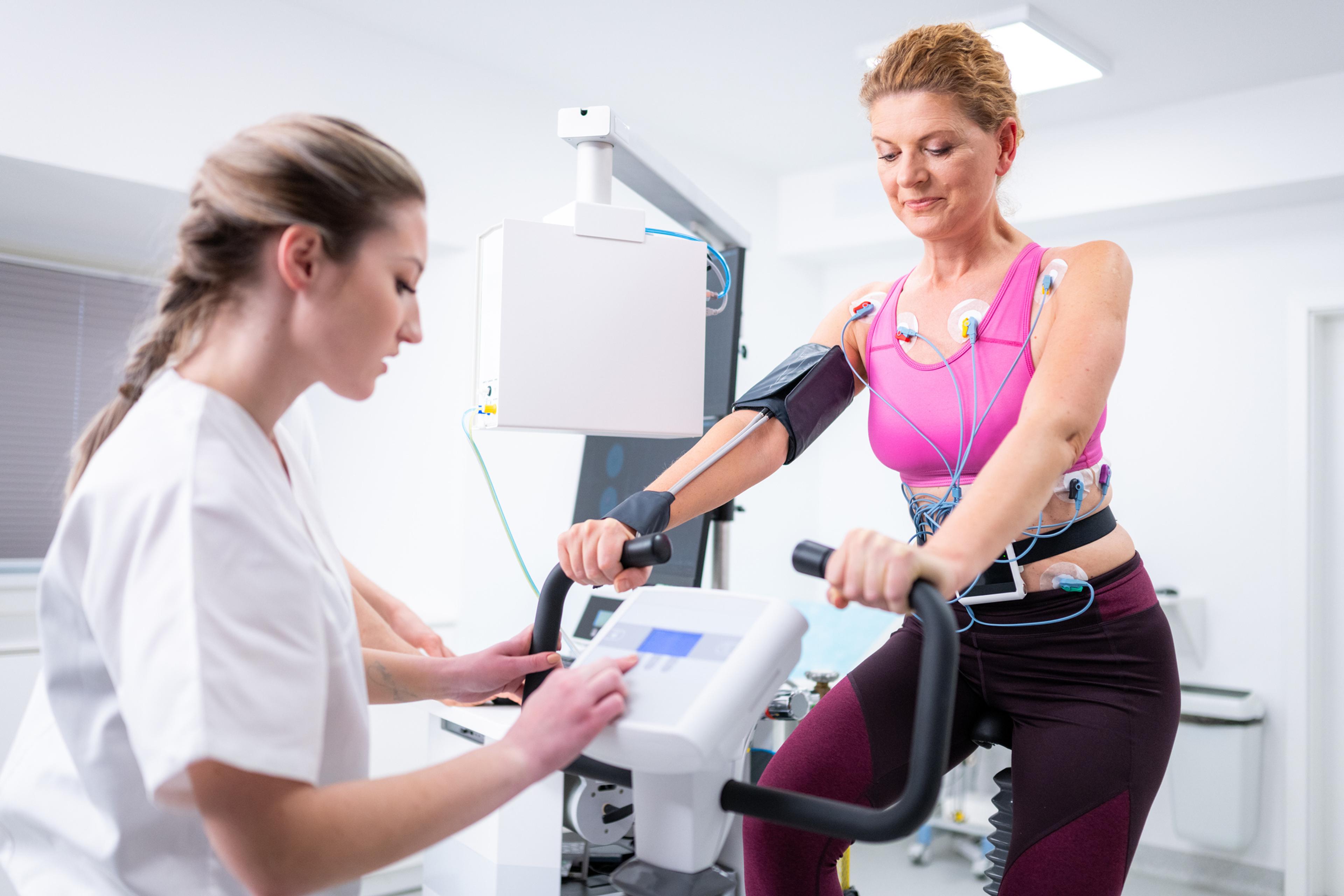How to Prepare for an Exercise Stress Test
Amy Barczy
| 3 min read
Amy Barczy is a former brand journalist who authored...

Exercise stress tests are designed to find out well the heart is functioning. If your doctor recommends you undergo an exercise stress test, they want to see how your heart functions when it has to work hard.
By making the heart work hard and monitoring its performance, doctors can tell if the arteries feeding the heart have any deposits of fat that could block blood vessels. Exercise stress tests are used as diagnostic tests to help guide treatment decisions and show how serious a heart condition may be.
These tests used to be part of routine check-ups. Now, they are done mainly to check people with symptoms or other risk factors for coronary artery disease, per the recommendations of the U.S. Preventive Services Task Force. Additional follow-up tests may be needed to further diagnose a heart condition. These tests are also used to evaluate patients with known cardiac disease.
What an exercise stress test involves
An exercise stress test compares blood flow to the heart muscle both at rest and when it is under stress. These are typically done at a doctor’s office or a hospital and take about an hour.
A technician will take your resting heart rate and blood pressure, as well as other vital signs. Then they will attach electrodes to your chest and arms. These will connect to the EKG (electrocardiogram) machine. Then you walk on a treadmill or ride a stationary bike for 10 to 15 minutes. During that time, trained specialists will monitor how you’re doing and increase the pace until you reach a target heart rate based on your age and fitness level. Once the team has the measurements they need, the test will end. The test will also end if you have symptoms like shortness of breath, chest pain, abnormal blood pressure, dizziness or an abnormal heart rhythm.
If you can’t exercise, there are medications that can make the heart pump faster to mimic activity while your heart rate is monitored.
After the test, providers will monitor your vital signs until they return to normal ranges. Once vital signs like your heart rate and blood pressure have returned to normal, you are free to leave.
How to prepare for an exercise stress test
Your health care provider will provide a detailed list of instructions for how to prepare for your exercise stress test. Generally, here are some of the best practices to understand prior to your test:
- Don’t eat anything in the hours prior to the test. If you have diabetes, talk to your doctor about how to manage your meals and medications on the day of the test.
- Avoid caffeine for 24 hours before the test.
- Don’t smoke or use other tobacco products.
- Talk to your provider about any medications you may take. There may be certain medications you need to stop taking on the day of your test. Bring your inhaler to the appointment.
- Find ways to relax and reduce your stress before the test. Being anxious can affect your results.
- Wear sturdy walking shoes and lightweight, comfortable clothes for exercise with a separate top and bottom. Women should talk to their doctor to make sure they wear the correct type of bra for the test.
Understanding the results of an exercise stress test
Results from an exercise stress test can help your doctor understand if additional testing is necessary. A normal result may mean you do not have arteries that are 70% blocked or greater – but there may be a smaller blockage and your doctor may want to perform additional testing. An abnormal result may mean you have arteries that are 70% blocked or greater. The abnormal result will likely require additional tests to confirm that you have coronary artery disease. Talk with your health care provider about what your results mean, and what their recommended next steps are.





